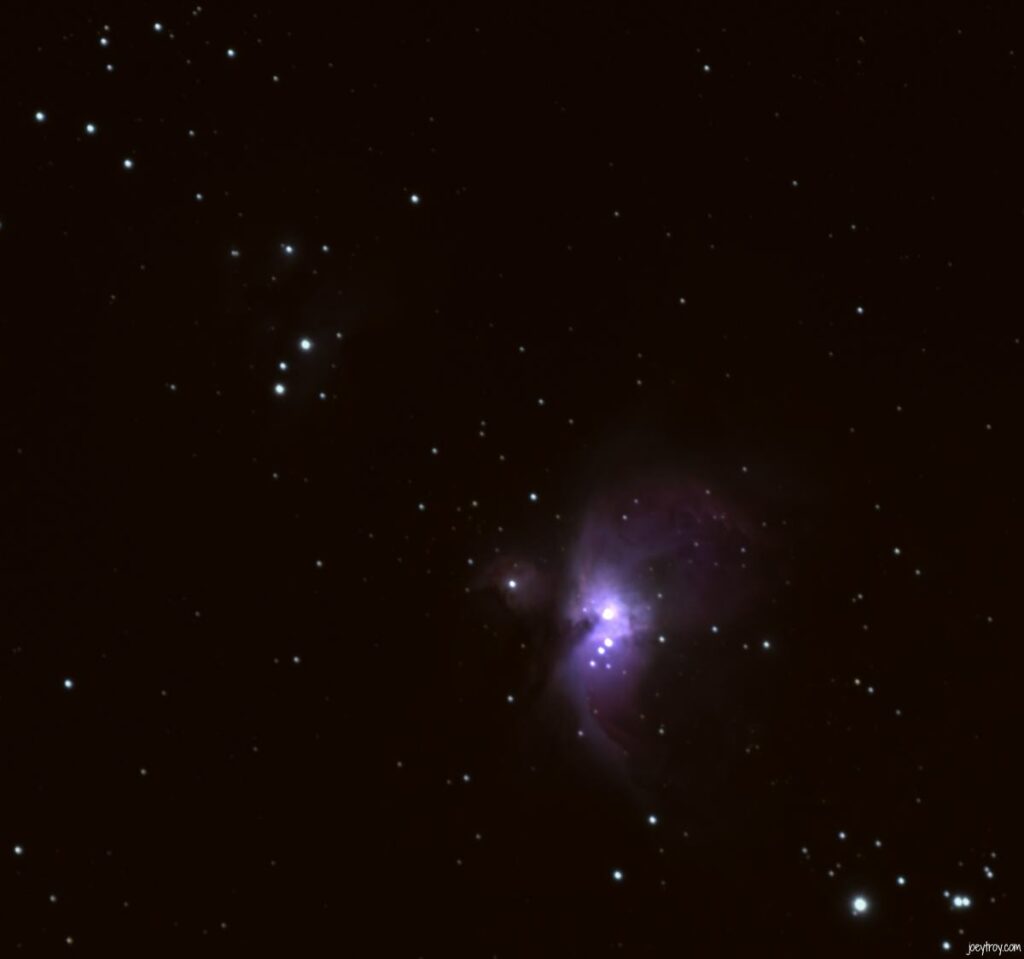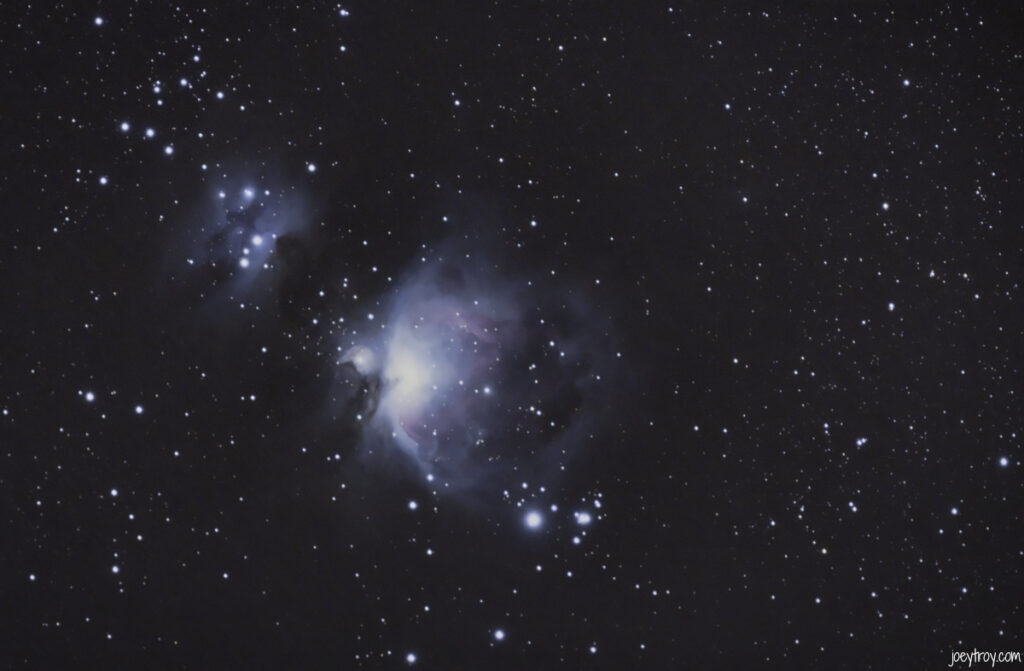So as I continue to take pictures of deep skies objects I have found the key to taking better photos with less noise is to dither but to get greater detail and colors you need to shoot longer. While I say longer which could mean longer exposures I also mean longer as in more exposures. Back on October 11th, 2020 of this year, I shot one evening on M42 the Orion Nebula for a total of 13 minutes and man alive was I pumped on the purples I was able to capture but wasn’t really happy with the outcome using DeepSkyStaker, Affinity Photo and Luminar 4.

Fast forward to November 2020 when I got my hands on the PixInsight software which took some time to learn I was able to take the original images I took from the picture above and took the picture to another level. After restacking all the images and editing them in PixInsight, Luminar 4, and Affinity Photo I was able to see NGC 1977 The Running Man which I didn’t even know was there from my photos above. *Rember to save all the photos you shoot as you can practice at getting better in post-production as you acquire the skills.

Now while the new image looks better if you look at full resolution we still see issues with the image

- There is a lot of noise with the image due to not being able to dither
- I wasn’t perfectly polar aligned so there are some issues with the stars stretching like eggs
- I had to edit the image a lot to bring out the colors due to only 13 minutes of exposures
- There is not much detail due to only 13 minutes of exposures
So what in the world does more exposure do? Well for one it lets you gather more light which in return gives you way more detail and colors in your photos of deep space. I could bore you with how long it takes light to travel and that this image I took is 1344 Million years old due to the speed of light traveling to us but I digress. So fast forward to December 2020 just two months later and I was able to take the following picture…will go with that old saying “a picture is worth a thousand words”.

So what in the world happened and how was I able to get a better picture? Well, this was taken over 8 days and I collected 6.75 hours of exposure or 81×5 minute single exposures of M42. This was all edited in PixInsight and I didn’t lean on Luminar 4 or Affinity Photo except to add my joeytroy.com signature at the bottom of the photo. Because I took over 6 hours of exposure I had a lot more data and detail when it was all stacked. Also, the image was way cleaner because I had a better polar alignment, a guide scope, and also dithering with the telescope to help with noise. Just to give you an example of how clean the image was here is a full resolution of the image.

There is hardly any noise in the photo (dithering) and you can see much great detail in the stars, and space clouds (exposure), and none of the stars have egg shapes (polar alignment, guide scope).
So if you are looking to get into Astrophotography remember it takes money and lots of time to be able to capture great photos. While I am no professional, this hobby brings me a lot of happiness and enjoyment even if it hasn’t been kind to my wallet.
Till next time…
